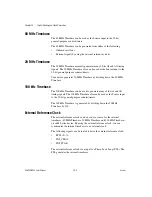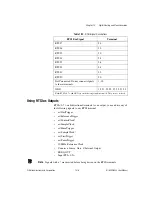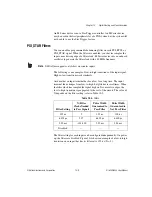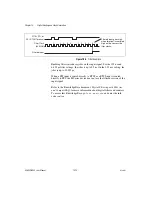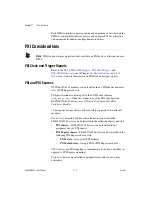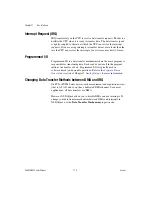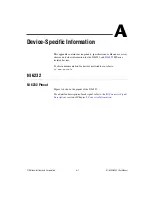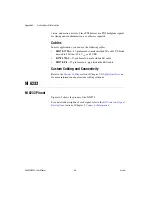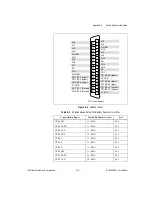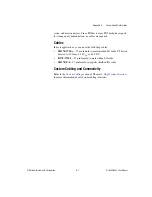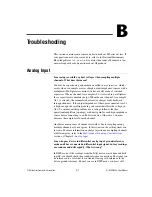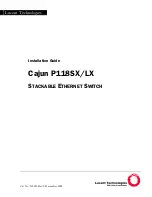
Chapter 10
Digital Routing and Clock Generation
©
National Instruments Corporation
10-9
An M Series device is not a Star Trigger controller. An M Series device
may be used in the first peripheral slot of a PXI system, but the system will
not be able to use the Star Trigger feature.
PXI_STAR Filters
You can enable a programmable debouncing filter on each PFI, RTSI, or
PXI_STAR signal. When the filters are enabled, your device samples the
input on each rising edge of a filter clock. M Series devices use an onboard
oscillator to generate the filter clock with a 40 MHz frequency.
Note
NI-DAQmx supports
only
filters on counter inputs.
The following is an example of low-to-high transitions of the input signal.
High-to-low transitions work similarly.
Assume that an input terminal has been low for a long time. The input
terminal then changes from low-to-high, but glitches several times. When
the filter clock has sampled the signal high on N consecutive edges, the
low-to-high transition is propagated to the rest of the circuit. The value of
N depends on the filter setting; refer to Table 10-3.
The filter setting for each input can be configured independently. On power
up, the filters are disabled. Figure 10-4 shows an example of a low-to-high
transition on an input that has its filter set to 125 ns (N = 5).
Table 10-3.
Filters
Filter Setting
N (Filter
Clocks Needed
to Pass Signal)
Pulse Width
Guaranteed to
Pass Filter
Pulse Width
Guaranteed to
Not Pass Filter
125 ns
5
125 ns
100 ns
6.425 µs
257
6.425 µs
6.400 µs
2.55 ms
~101,800
2.55 ms
2.54 ms
Disabled
—
—
—








